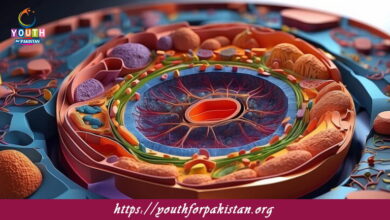Elastic Collision In One Dimension MDCAT MCQs with Answers

Welcome to the Elastic Collision In One Dimension MDCAT MCQs with Answers. In this post, we have shared Elastic Collision In One Dimension Multiple Choice Questions and Answers for PMC MDCAT 2024. Each question in MDCAT Physics offers a chance to enhance your knowledge regarding Elastic Collision In One Dimension MCQs in this MDCAT Online Test.
Elastic Collision In One Dimension MDCAT MCQs Test Preparations
In an elastic collision in one dimension, which quantity is conserved?
a) Momentum
b) Kinetic Energy
c) Both Momentum and Kinetic Energy
d) Neither Momentum nor Kinetic Energy
If two objects collide elastically in one dimension, what happens to their relative velocity before and after the collision?
a) It remains the same
b) It doubles
c) It halves
d) It reverses direction
In an elastic collision between two objects of equal mass, what happens to their velocities?
a) They exchange velocities
b) They maintain their velocities
c) They both come to rest
d) Their velocities add up
What is the relationship between the relative speed of approach and the relative speed of separation in an elastic collision?
a) They are the same
b) The relative speed of separation is half the relative speed of approach
c) The relative speed of separation is double the relative speed of approach
d) They are inversely proportional
Which of the following is true for an elastic collision?
a) Only momentum is conserved
b) Only kinetic energy is conserved
c) Both momentum and kinetic energy are conserved
d) Neither momentum nor kinetic energy is conserved
In an elastic collision, if one object is initially at rest, how does its final velocity compare to its initial velocity?
a) It will be equal to the initial velocity of the other object
b) It will be zero
c) It will be twice the initial velocity of the other object
d) It will be half the initial velocity of the other object
If two objects with equal masses collide elastically, what is the result in terms of their final velocities?
a) They switch velocities
b) They both move at half their initial speeds
c) They both come to a stop
d) Their velocities are added together
In an elastic collision, the sum of the squares of the initial velocities of the two objects is equal to:
a) The sum of the squares of their final velocities
b) The difference of the squares of their final velocities
c) The sum of their masses
d) The difference of their masses
If the mass of object A is greater than the mass of object B, and both collide elastically, which object will have a greater change in velocity?
a) Object A
b) Object B
c) Both objects will have the same change in velocity
d) No change in velocity
What happens to the total kinetic energy of two colliding objects if the collision is perfectly elastic?
a) It decreases
b) It increases
c) It remains constant
d) It becomes zero
In an elastic collision, the center of mass velocity of the system:
a) Changes after the collision
b) Remains constant before and after the collision
c) Is equal to the average velocity of the two objects
d) Depends on the mass of the objects
In an elastic collision in one dimension, if the first object is moving towards the second object which is initially at rest, the second object will:
a) Stay at rest
b) Move with a velocity equal to that of the first object
c) Move with a velocity dependent on the mass ratio
d) Move with twice the velocity of the first object
For a perfectly elastic collision, the coefficient of restitution is:
a) Less than 1
b) Equal to 1
c) Greater than 1
d) Zero
If a ball of mass 2 kg traveling at 5 m/s collides elastically with a ball of mass 1 kg at rest, what is the final velocity of the 1 kg ball?
a) 5 m/s
b) 10 m/s
c) 2.5 m/s
d) 0 m/s
In an elastic collision, if object A is moving towards object B, and object B is initially at rest, which quantity changes for object A?
a) Kinetic energy
b) Momentum
c) Velocity
d) Mass
When two objects of different masses collide elastically, the object with the smaller mass will:
a) Have a smaller change in velocity
b) Have a larger change in velocity
c) Have no change in velocity
d) Change its mass
In a perfectly elastic collision, if the initial velocity of object A is zero and object B is moving, object A will:
a) Move with the velocity of object B
b) Stay at rest
c) Move with half the velocity of object B
d) Move with twice the velocity of object B
For two objects colliding elastically, the final velocity of the center of mass of the system:
a) Changes according to the mass
b) Is the same as the initial velocity of the center of mass
c) Depends on the relative velocities
d) Becomes zero
In an elastic collision, if object A is initially at rest and object B is moving, what is true about the final velocities of both objects?
a) Object A will have the same final velocity as object B
b) Object B will come to rest
c) Object B will continue to move, and object A will have the velocity of object B
d) Both objects will move with the same velocity
If two balls of equal mass collide elastically and one ball is initially at rest, what will be the outcome in terms of their velocities?
a) The moving ball will stop, and the ball at rest will start moving with the velocity of the first ball
b) Both balls will move with half the initial velocity of the moving ball
c) Both balls will move in the same direction with the same speed
d) The ball initially at rest will move with the initial velocity of the moving ball
What happens to the momentum of the system in an elastic collision?
a) It changes
b) It is conserved
c) It becomes zero
d) It doubles
In a perfectly elastic collision, the change in kinetic energy of the system is:
a) Positive
b) Negative
c) Zero
d) Equal to the change in momentum
For a collision to be elastic, the work done on the system must be:
a) Positive
b) Negative
c) Zero
d) Equal to the initial kinetic energy
When two objects collide elastically, what remains unchanged for each object?
a) Kinetic energy
b) Momentum
c) Both Kinetic energy and Momentum
d) Neither Kinetic energy nor Momentum
The coefficient of restitution for an elastic collision is:
a) Zero
b) One
c) Less than one
d) Greater than one
When dealing with elastic collisions, the momentum of the system:
a) Can be negative
b) Is not conserved
c) Remains constant
d) Changes depending on the mass of the objects
For two colliding objects in an elastic collision, what is true about the relative velocity of approach and relative velocity of separation?
a) They are equal
b) The relative velocity of separation is double that of approach
c) The relative velocity of separation is the negative of the relative velocity of approach
d) The relative velocity of separation is half that of approach
For a collision to be classified as elastic, the total mechanical energy:
a) Must increase
b) Must decrease
c) Must remain constant
d) Can vary
In an elastic collision, if object A has twice the mass of object B, what can be said about their velocities after collision if object B was initially at rest?
a) Object A will have zero velocity and object B will have twice the initial velocity of A
b) Object A will move with half the initial velocity of B and object B will move with the initial velocity of A
c) Object B will move with the velocity of A and object A will come to rest
d) Both objects will move with the same velocity
In a system with two colliding objects, if the collision is elastic, what is true about the energy distribution?
a) Kinetic energy is transferred from one object to the other without any loss
b) Kinetic energy is lost to heat
c) The total kinetic energy is converted into potential energy
d) Total mechanical energy is not conserved
If you are interested to enhance your knowledge regarding Physics, Chemistry, Computer, and Biology please click on the link of each category, you will be redirected to dedicated website for each category.




